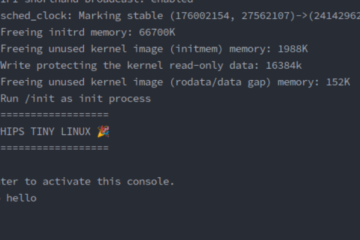Nix: How to Package a Shell Script
Nix with its ecosystem is amazing tooling and the library functions in nixpkgs provide great builders to package certain programs, scripts, and stuff. But in this jungle of options, it’s also sometimes not clear which option is the best or most pragmatic solution. In this blog post, I’m going to present you the most pragmatic and easiest way to package a shell script in Nix from my year-long experience of packaging things. In...
Read more
